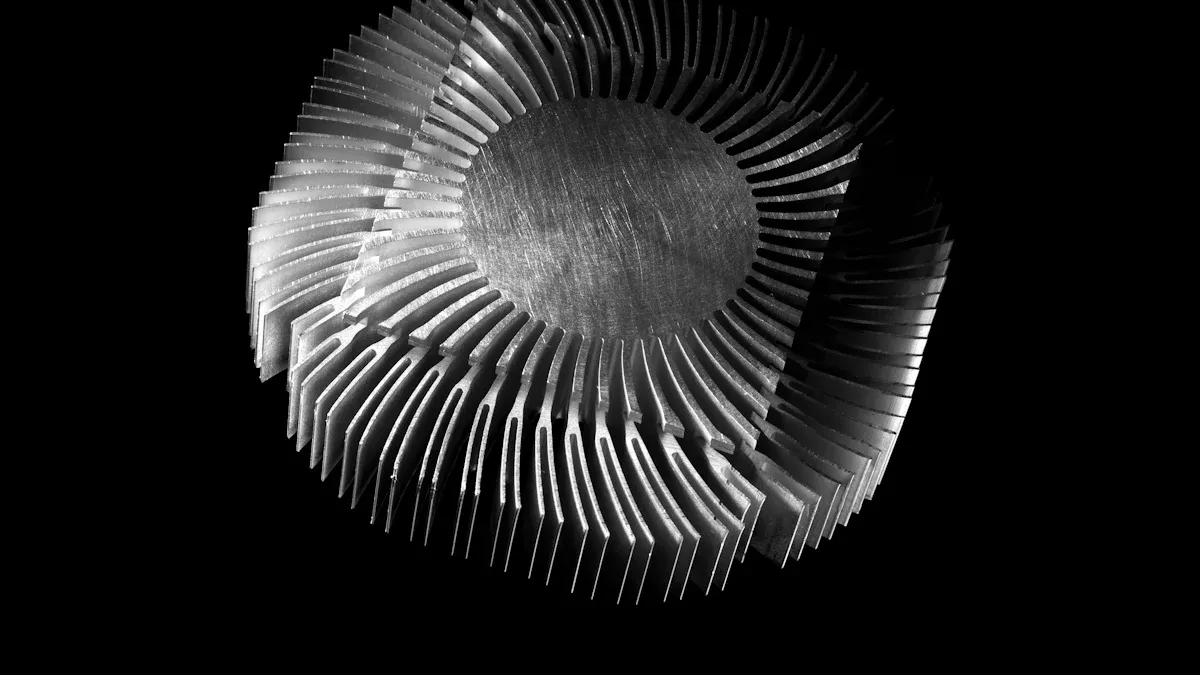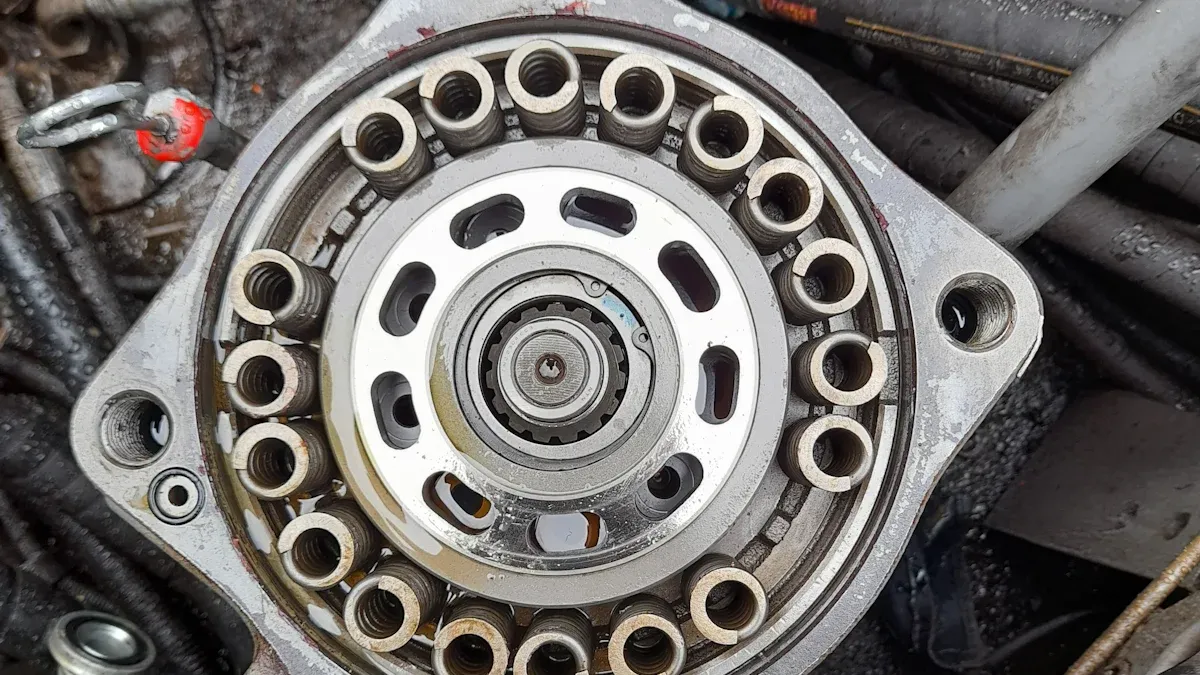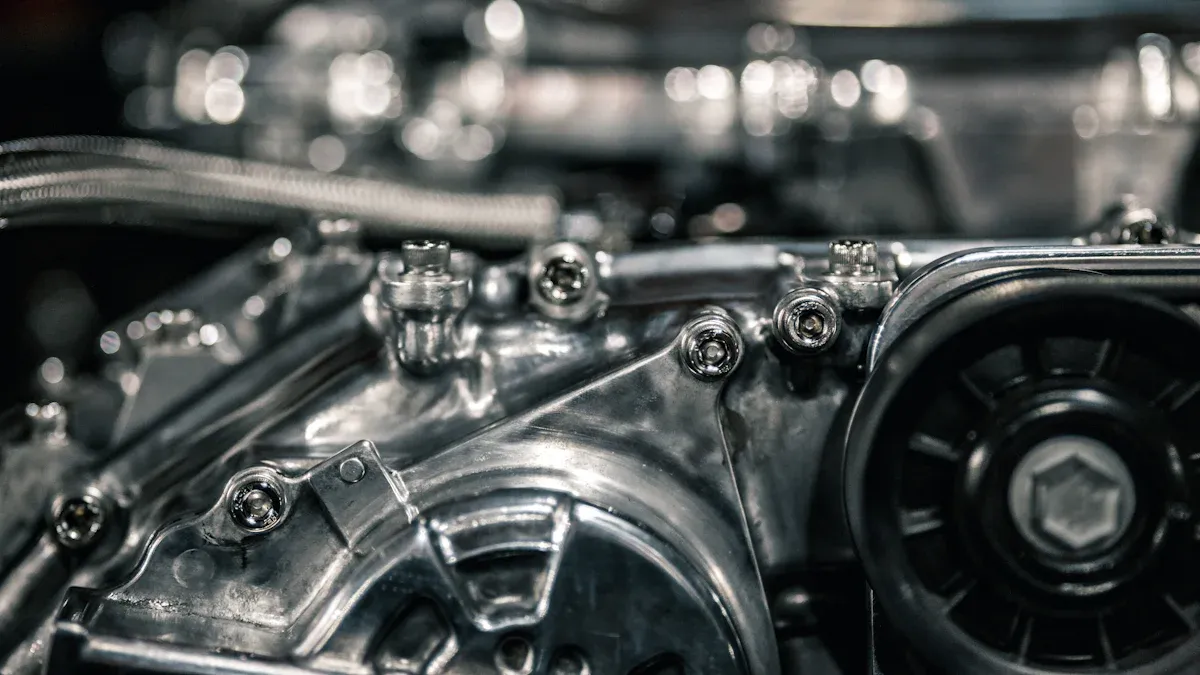
Precision investment casting fabrication has transformed the manufacturing of intricate components. The advantages of investment casting, such as its ability to replicate fine details and provide smooth finishes, make it a preferred choice for industries that require high precision.
The global investment casting market, valued at USD 17.9 billion in 2023, is projected to grow at a 5.3% CAGR, fueled by the aerospace and automotive sectors’ demand for lightweight, complex parts. Recent innovations, including automation and 3D printing, enhance efficiency and enable the creation of intricate designs with minimal waste.
From turbine blades in aerospace to orthopedic implants in medicine, this process consistently delivers unmatched quality and reliability, making it a vital operation within any investment casting plant.
The Process of Precision Investment Casting Fabrication

Wax Pattern Creation and Mold Development
The journey of precision investment casting fabrication begins with the creation of a wax pattern. This pattern serves as an exact replica of the final part, ensuring every detail is captured. Multiple wax patterns are often assembled into a tree-like structure, allowing several components to be cast simultaneously. Once the wax tree is ready, it is coated with layers of ceramic slurry. Each layer hardens to form a durable shell capable of preserving even the most intricate designs. Afterward, the wax is melted out, leaving behind a hollow ceramic mold that mirrors the original wax model.
This step is critical for achieving the precision and complexity that make this process so valuable. By using advanced techniques like 3D printing for wax patterns, manufacturers can create highly detailed designs while reducing material waste.
Casting and Material Selection
The next phase involves filling the ceramic mold with molten metal. The choice of material plays a significant role in determining the quality and performance of the final product. Common materials include copper alloys, aluminum, stainless steel, and brass. For example:
| Material | Properties | Impact on Quality |
|---|---|---|
| Copper Alloy | Superior strength, corrosion resistance, electrical and thermal conductivity | Ideal for high-stress components in aerospace and automotive industries. |
| Aluminum | Lightweight and versatile | Perfect for applications requiring moderate strength and high corrosion resistance. |
| Stainless Steel | High durability and temperature tolerance | Suitable for demanding environments but requires careful handling to ensure a smooth finish. |
Selecting the right material ensures the cast part meets the required specifications for its intended application.
Achieving High Precision and Smooth Finishes
Precision investment casting fabrication excels at delivering parts with exceptional accuracy and smooth finishes. Automation in dipping and assembly lines minimizes human error, ensuring consistency across batches. Additionally, advancements in refractory ceramics enhance mold performance, allowing for more complex geometries. Techniques like 3D printing of wax models further improve precision by enabling the creation of intricate designs that were once impossible.
This process also reduces the need for extensive post-casting machining. The result? High-quality components with minimal waste and faster production times. Whether it’s a turbine blade or a medical implant, the final product consistently meets the highest standards of detail and finish.
Advantages of Precision Investment Casting for Complex Designs
Superior Accuracy and Detail Replication
Precision investment casting stands out for its ability to replicate intricate details with remarkable accuracy. This process captures even the smallest features, making it ideal for components with tight tolerances and complex geometries. Industries that demand high precision, like aerospace and medical, rely on this method to produce reliable parts.
The investment casting process excels when fine details and complex shapes are essential, making it the preferred choice for industries prioritizing quality and precision in their parts.
Some key benefits include:
- The ability to create intricate designs with tight tolerances.
- Superior surface finishes that reduce the need for additional treatments.
- Net shape or near-net shape production, minimizing machining requirements.
This level of precision ensures that components meet exact specifications, saving time and resources.
Versatility in Material Options
One of the greatest strengths of precision investment casting fabrication is its adaptability to various materials. From lightweight aluminum to durable stainless steel, this process accommodates a wide range of alloys. Each material offers unique properties, catering to different industries.
- Stainless Steel: Known for its corrosion resistance and strength, it’s widely used in aerospace and medical applications.
- Aluminum: Lightweight and corrosion-resistant, making it perfect for automotive components.
- Superalloys: Ideal for high-performance parts in aerospace and power generation.
This versatility allows manufacturers to tailor components to specific needs, ensuring optimal performance in diverse environments.
Cost-Effectiveness for Intricate Components
While the initial tooling costs for investment casting may seem high, the long-term savings are significant. The process produces near-net shapes, reducing the need for extensive machining. This not only saves time but also minimizes material waste.
- Achieves intricate parts with tight tolerances, reducing additional machining.
- Minimizes waste through efficient material usage.
- Offers repeatable precision, making it cost-effective for high-volume production.
By combining precision with efficiency, precision investment casting fabrication delivers high-quality components at a competitive cost, especially for complex designs.
Why Precision Investment Casting Outperforms Other Methods
Comparison with Traditional Casting Techniques
Precision investment casting fabrication offers significant advantages over traditional casting methods. It delivers tighter tolerances and smoother surface finishes, making it ideal for intricate designs. Traditional techniques, like sand casting, often result in rough surfaces and lower dimensional accuracy.
- Investment casting produces highly detailed parts with complex geometries.
- Sand casting struggles with precision and often requires additional machining.
- Components from investment casting require less post-processing, saving time and resources.
This process also excels in creating thin walls and internal cavities, which are challenging for traditional methods. Manufacturers benefit from flawless parts that meet stringent quality standards without extensive finishing procedures.
Benefits Over CNC Machining for Complex Parts
When comparing precision investment casting to CNC machining, both methods have unique strengths. CNC machining is better suited for prototyping due to its flexibility in design modifications. However, once the design stabilizes, investment casting becomes more cost-effective for high-volume production.
- CNC machining avoids mold costs during prototyping, enabling rapid design changes.
- Investment casting reduces machining needs by producing near-net shapes.
- High precision and intricate geometries make casting ideal for finalized designs.
For complex parts, investment casting provides superior surface finishes and dimensional accuracy, minimizing waste and machining time. Manufacturers can achieve intricate designs efficiently, especially for large production runs.
Advantages Over Additive Manufacturing for Certain Applications
While additive manufacturing has revolutionized production, precision investment casting remains unmatched in certain areas. It offers superior material diversity, allowing manufacturers to select metals and alloys tailored to specific performance needs.
| Advantage | Description |
|---|---|
| Precision and Surface Finish | Produces intricate designs with tight tolerances and excellent finishes, reducing post-treatment. |
| Material Diversity | Supports a wide range of metals, including high-value alloys for demanding applications. |
| Reduced Material Waste | Minimizes waste, making it cost-effective for industries using expensive materials. |
| Improved Part Integrity | Ensures structural accuracy and reliability, meeting stringent quality standards. |
Precision investment casting fabrication excels in creating parts with high dimensional accuracy and structural integrity, making it indispensable for industries like aerospace and medical equipment.
Industries and Applications Leveraging Precision Investment Casting Fabrication

Aerospace and Defense Components
Precision investment casting fabrication plays a vital role in aerospace and defense industries. These sectors demand components that are lightweight, durable, and capable of withstanding extreme conditions. This process meets those needs by producing parts with tight tolerances and complex geometries. For example, turbine blades and engine casings require exceptional precision to ensure optimal performance and safety.
The ability to use a wide range of materials, including aluminum and high-strength alloys, makes this method ideal for aerospace applications. Military equipment also benefits from this process. It minimizes defects, reduces secondary machining, and ensures consistent quality across multiple parts. This reliability is critical for life-and-death applications, where even minor flaws can have serious consequences.
Tip: By consolidating components into single castings, manufacturers eliminate weld defects and improve overall part integrity.
Medical and Dental Equipment
The medical field relies heavily on precision investment casting for its high accuracy and ability to create intricate designs. Surgical instruments, orthopedic implants, and dental components often feature complex geometries that require exact specifications. This process delivers smooth finishes and biocompatible materials, ensuring patient safety and compliance with strict medical standards.
For instance, orthopedic implants must fit perfectly within the human body, while surgical tools need precise edges for effective use. Investment casting allows manufacturers to meet these stringent requirements without compromising quality. Its ability to produce intricate shapes also reduces the need for additional machining, saving time and resources.
Automotive and Industrial Machinery
In the automotive and industrial sectors, precision investment casting fabrication offers cost-effective solutions for creating intricate components. Engine parts, turbochargers, and brake system elements are just a few examples of parts that benefit from this process. By producing near-net shapes, manufacturers reduce material waste and minimize machining needs, leading to significant cost savings.
| Benefit | Description |
|---|---|
| Cost Savings on Assembly | Near-net shapes reduce secondary machining, cutting production costs. |
| Less Machinery for Complex Parts | Complex designs require minimal further machining, lowering project budgets. |
| Cost-Efficiency | Reduced waste and machining time make it an economical choice for high-quality parts. |
This efficiency makes precision investment casting an attractive option for high-volume production. It ensures that even the most complex designs meet industry standards while keeping costs under control.
Precision investment casting fabrication offers unmatched advantages for creating intricate designs. Manufacturers benefit from its ability to produce highly detailed components with smooth finishes, reducing the need for extra machining. By collaborating with experts early in the design phase, they can optimize manufacturability and achieve consistent results. This process ensures cost efficiency, material versatility, and exceptional precision, making it the go-to solution for complex designs across industries.
FAQ
What makes precision investment casting ideal for intricate designs?
Precision investment casting creates complex shapes with tight tolerances and smooth finishes. It minimizes machining and material waste, making it perfect for detailed components.
Can Ningbo Pingheng Machinery cast parts using different materials?
Yes, Ningbo Pingheng Machinery casts parts using materials like tin bronze, silicon brass, stainless steel (304, 316), and more. They follow various national standards for quality.
Tip: Consult their team early in the design phase to select the best material for your application.
Which industries benefit most from precision investment casting?
Industries like aerospace, automotive, and medical rely on precision investment casting. It delivers high-quality, reliable components for demanding applications, ensuring performance and durability.
